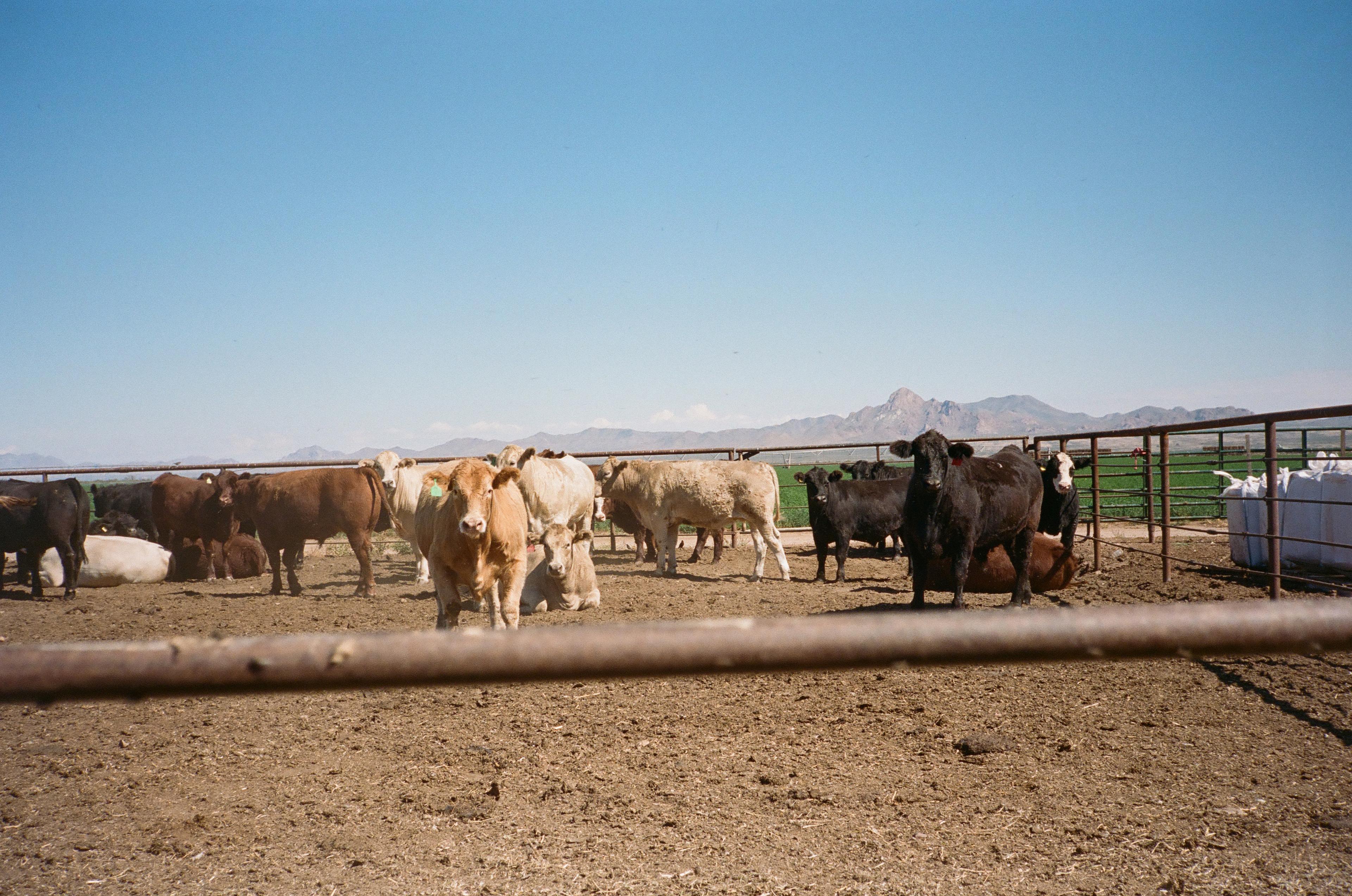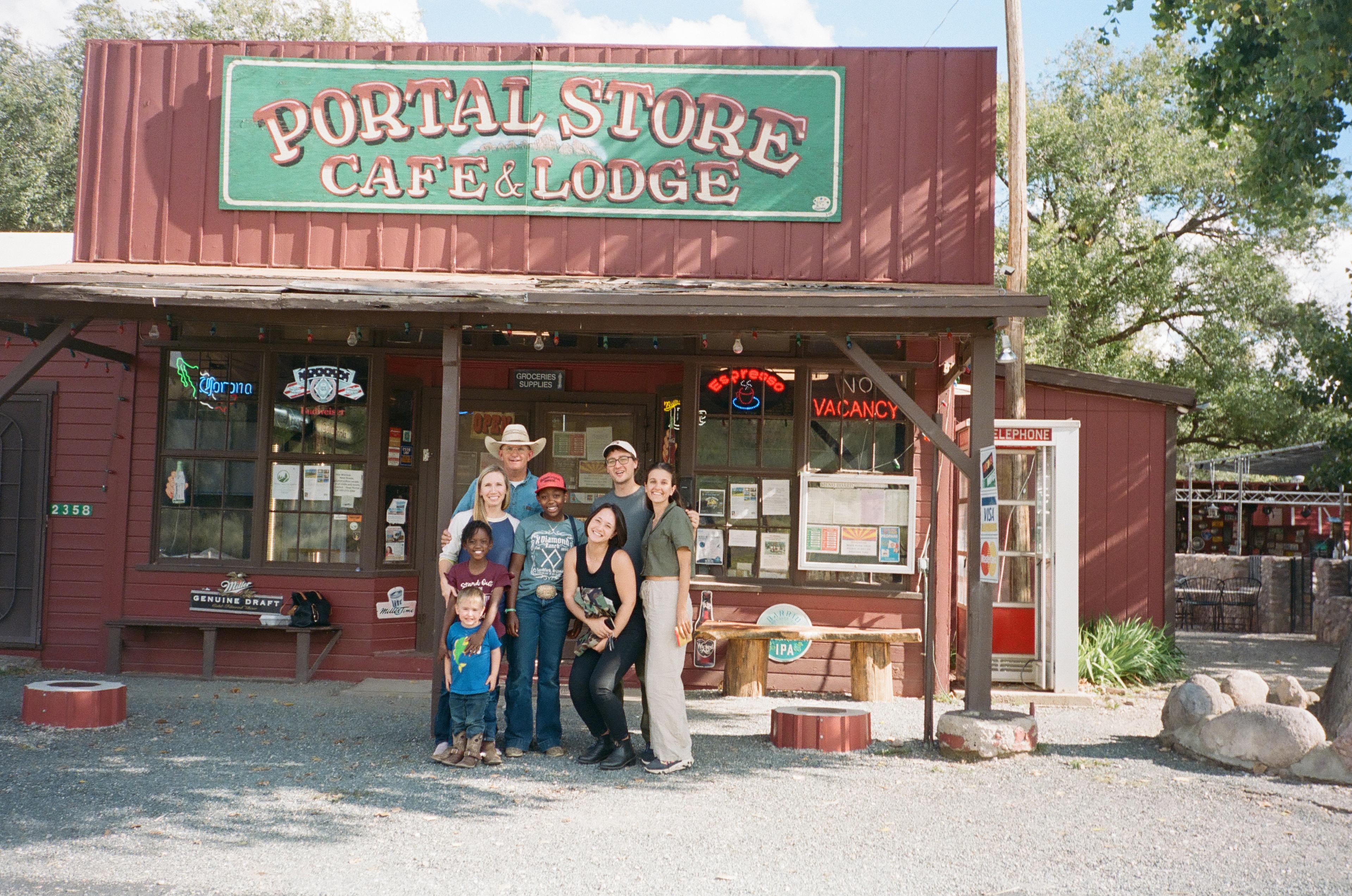Jason and Candice Barnard's family roots in Arizona agriculture stretch back over 70 years. Three generations later, they started their own farming operation, initially focused on row crops and specialty produce like chili and pumpkins. Their path toward livestock production began after purchasing their current farm in 2011—a property already outfitted for cattle. What started as a pragmatic solution—feeding rained-on hay with a lesser value to cattle—quickly revealed a new passion that would redefine their business.
"Everything we used to grow was to sell off the farm," Jason explains. "Now we only grow products that we can use on the farm in cattle production." This thoughtful pivot came as they watched the economics of crop farming shift beneath their feet. With crop prices stagnating while labor costs quadrupled, they transformed their operation to focus on what was working — raising their increasingly sought-after American Wagyu beef.

The Challenge
While Jason's childhood dream of feeding cattle was becoming reality, their growing operation brought complex tracking challenges. They were already managing multiple enterprises—farming, cattle feeding, direct-to-consumer beef, and trucking—when 2020 delivered both crisis and opportunity. A cattle market crash threatened their substantial investment in feeder calves, but simultaneously, COVID created unprecedented demand for their direct-to-consumer beef business.
"In 2020, our beef business got rolling. And now it is really, really rolling," Candice explains. This accelerated growth in direct marketing required better financial tracking systems as they expanded from selling quarters and halves to developing a full retail line of Wagyu beef products. They took a calculated risk on Wagyu genetics with just one bull, not knowing how it would perform but recognizing the market opportunity.
As their business shifted and grew, Candice found their existing accounting system couldn't keep pace, realizing "QuickBooks wasn't the tool for the next year, let alone the next generation."
The Solution
What first won Candice and Jason over was Ambrook's ability to organize their financial data clearly and intuitively. The platform's agriculture-specific categorization system helped them establish an accurate picture of their operation without the confusion they'd experienced with generic accounting software. This immediate clarity gave them confidence that they were tracking expenses and income correctly.
As they grew more comfortable with the platform, it evolved into their financial decision-making center. Though Jason was initially skeptical—"I was like, 'nah, we don't need another thing to do,'" he recalls—the platform quickly became their shared language for evaluating the business objectively. The data transformed difficult conversations into clear paths forward. When discussing their trucking operation last year, Jason explains how the platform facilitated a decision: "Candice said, 'we have got to get rid of these trucks!' and I'm like, 'but I love that truck, it's so cool!'... Candice said, 'Come look at Ambrook with me.'" The numbers settled the matter. "Let the numbers tell the truth."
Clarity on decision-making also came from a renewed budgeting process. After years of maintaining Excel spreadsheets with nagging uncertainty, Jason found new confidence in their financial projections. "I've always had this little bit of angst because I think that's what this cost is, but I'm not 100% sure," he admits. Now when preparing their annual budget, Candice can quickly verify his assumptions against actual performance data. "Instead of guessing that I'm right, I know that I'm right," Jason says. "That was probably the most peaceful feeling I've had in a long time."
The Results

Over the two years since adopting Ambrook, Candice and Jason have doubled their beef business. What started as a side venture has grown into one of their largest profit centers, with the platform's detailed analytics guiding key investment decisions. "Real quick, instantly, boom, we know where we're at with the beef business. Like, okay, let's keep growing that," Jason explains.
This clarity proved critical when they secured a major new customer—a boutique brewing company that ordered 2,200 pounds of beef in just 12 days, far exceeding their initial projections.
For Candice, Ambrook has simplified financial management while providing deeper insights. "Life is so much easier with Ambrook. Because life has gotten more complicated for me business-wise, but not in the office."
Looking Forward
WhiteBarn Beef now faces exciting growth challenges as they continue scaling their operation. Their recent success with Arizona Wilderness Brewing Co. has created demand that stretches their current capacity.
This growth has the Barnards searching for additional half-Wagyu, half-Angus cattle suppliers while they expand their own breeding program. Having already reached their goal of marketing 100 head of finished beef annually, they're now building towards the next level of production.
For Candice and Jason, Ambrook has become an essential tool for making confident business decisions based on real numbers rather than gut feelings. By maintaining clear visibility into each enterprise's performance, they're building exactly what they've always wanted—a sustainable family business positioned to thrive for generations to come.
Make confident decisions